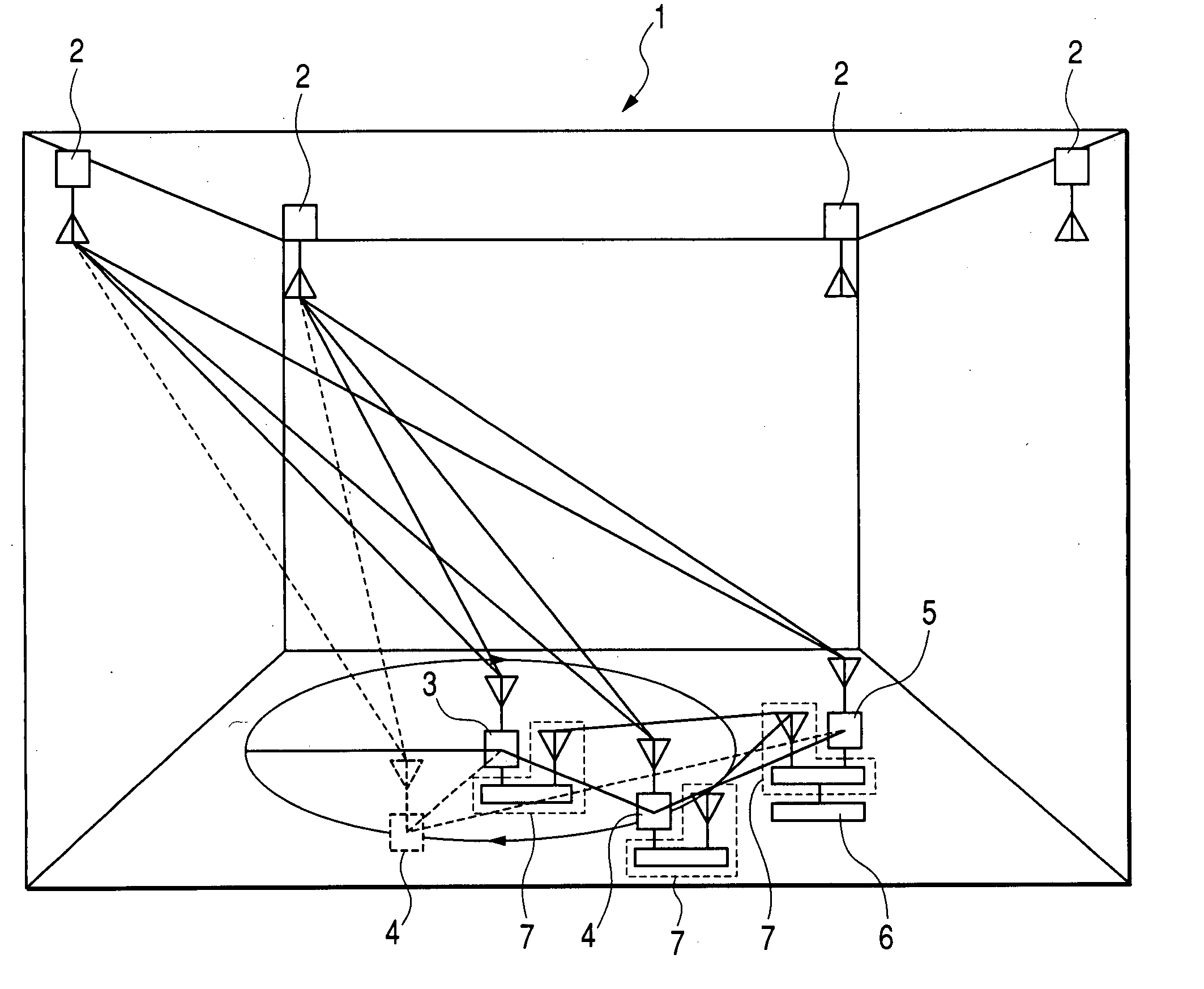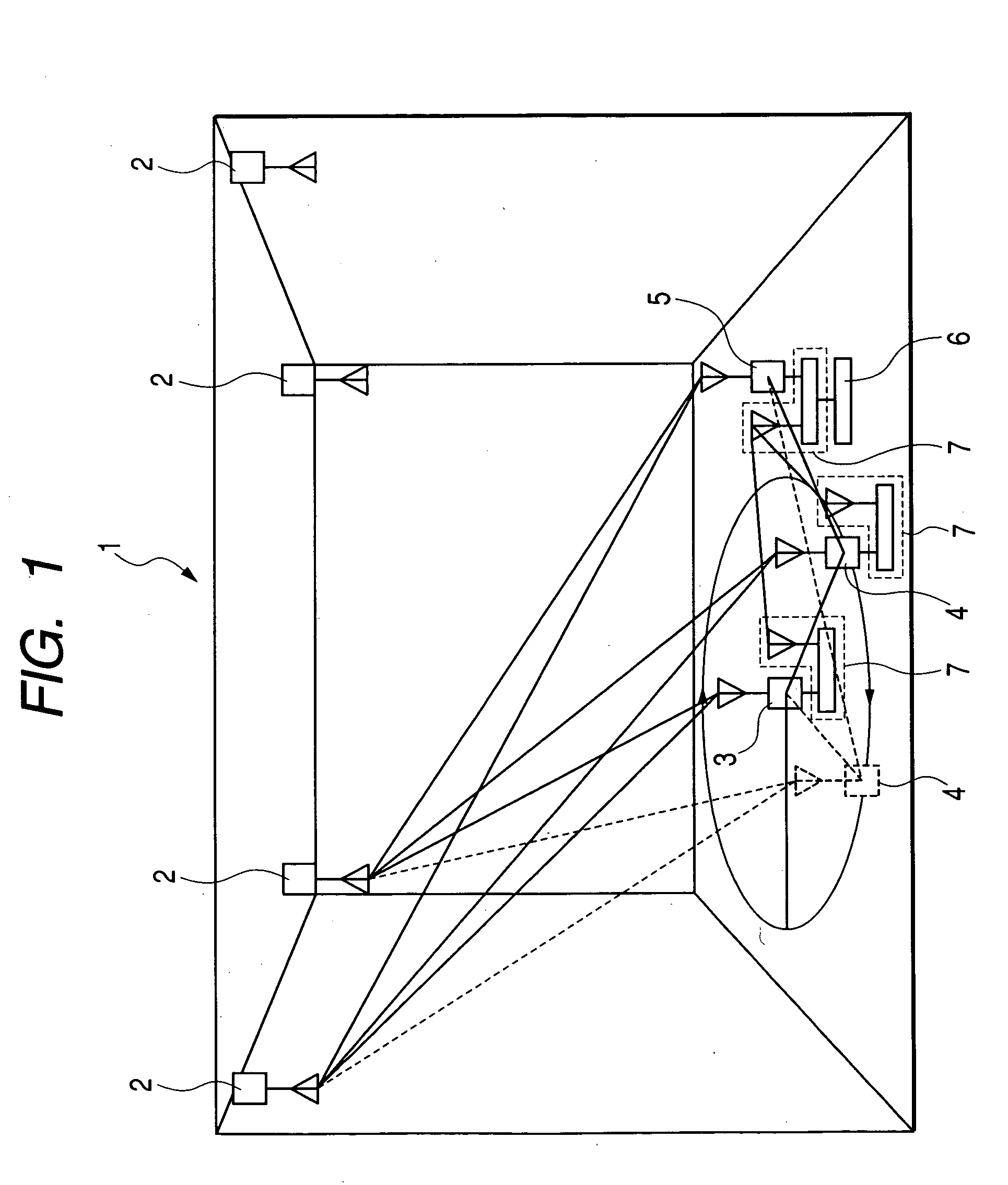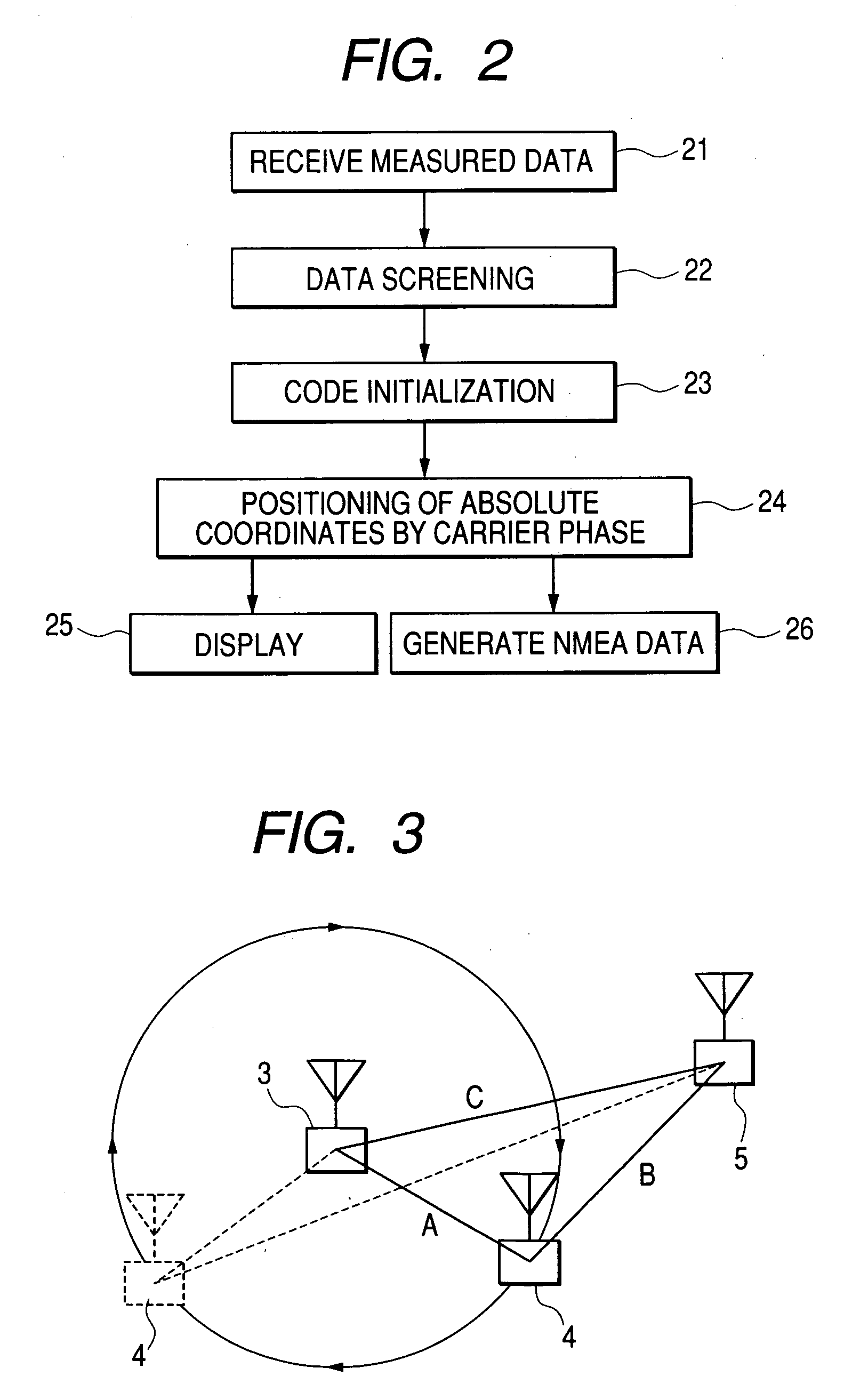RTK positioning system and positioning method therefor
a positioning system and positioning method technology, applied in direction finders using radio waves, navigation instruments, instruments, etc., can solve the problems of inability to receive signals, erratic or impossible reception of satellite signals, and repeated operation of ambiguity determination operations, so as to reduce the number of devices to be installed indoors
- Summary
- Abstract
- Description
- Claims
- Application Information
AI Technical Summary
Benefits of technology
Problems solved by technology
Method used
Image
Examples
Embodiment Construction
[0049] Assume that the locations of a pseudolite and a stationary reference station are previously obtained, and that code and carrier phase of a signal transmitted from the pseudolite are measured by the stationary reference station, a moving reference station and a rover receiver held by a user. Data of the code and the carrier phase, which are measured by the stationary reference station, the moving reference station and the rover receiver, are transmitted to a user processing unit using a data link. The user processing unit determines a baseline between the stationary reference station and the moving reference station and a baseline between the moving reference station and the rover receiver, and employs the two baselines and the previously known location of the stationary reference station to determine the position of the rover receiver. Therefore, even in places, such as indoors, where a GPS signal cannot be received, or in places hidden from the satellite, such as those in mo...
PUM
 Login to View More
Login to View More Abstract
Description
Claims
Application Information
 Login to View More
Login to View More - R&D
- Intellectual Property
- Life Sciences
- Materials
- Tech Scout
- Unparalleled Data Quality
- Higher Quality Content
- 60% Fewer Hallucinations
Browse by: Latest US Patents, China's latest patents, Technical Efficacy Thesaurus, Application Domain, Technology Topic, Popular Technical Reports.
© 2025 PatSnap. All rights reserved.Legal|Privacy policy|Modern Slavery Act Transparency Statement|Sitemap|About US| Contact US: help@patsnap.com



